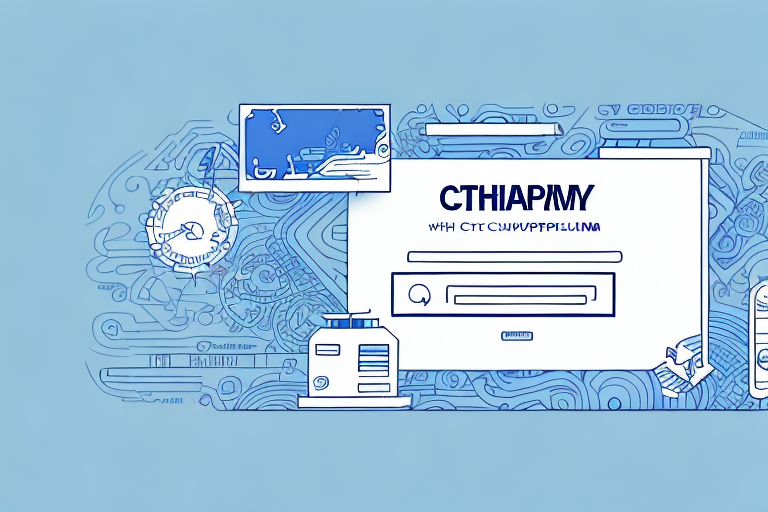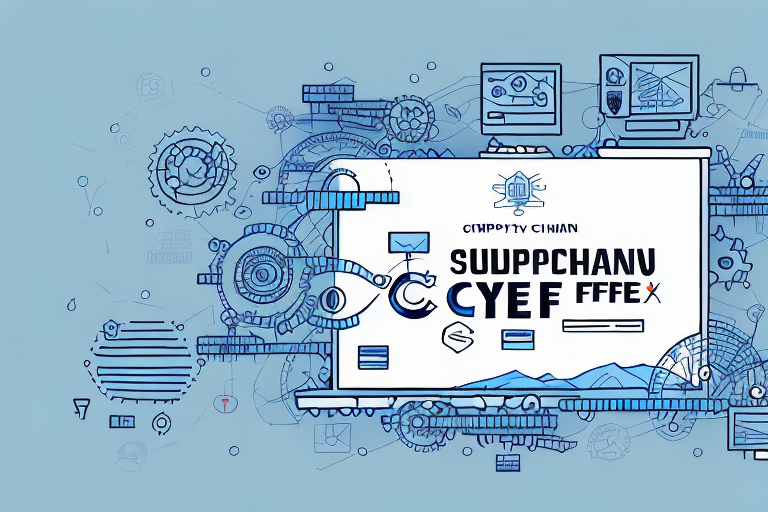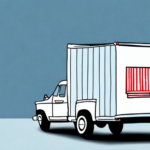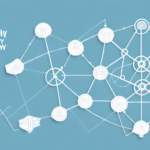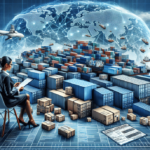Understanding the Customs Exam Process in the Supply Chain
The world of supply chain management is intricate, encompassing numerous components that must synchronize seamlessly to ensure goods are delivered punctually and in optimal condition. A pivotal element of this process is the customs examination, which scrutinizes shipments entering or exiting a country to verify compliance with all applicable laws and regulations. This article delves into the significance of the customs examination process in supply chain management, explores the various types of examinations, provides strategies for preparation, and more.
Why the Customs Exam Process is Crucial for Supply Chain Management
When goods traverse international borders, they must comply with a myriad of regulations and laws. The customs examination process serves as the primary mechanism for enforcing these regulations. Without thorough examinations, the supply chain could be exploited by smugglers and other illicit actors to transport illegal goods or engage in prohibited activities. Additionally, customs exams safeguard public health and safety by ensuring that dangerous or hazardous materials do not enter a country without the necessary permits, inspections, and verifications.
Furthermore, the customs examination process is vital in facilitating international trade. By ensuring that all goods meet the relevant regulations and standards, customs exams help prevent delays and disruptions within the supply chain. This efficiency reduction directly translates to lower costs and increased operational effectiveness for businesses dependent on global trade.
Importantly, the customs examination process also generates valuable data and insights for supply chain management. By tracking the movement of goods and identifying potential risks or bottlenecks, customs officials provide businesses with the information needed to optimize their supply chain operations and enhance overall performance. This data can highlight areas for improvement, streamline processes, and reduce costs, ultimately fostering a more competitive and successful business environment.
According to the World Trade Organization, inefficient customs procedures can increase trade costs by up to 30%, highlighting the critical role of efficient customs processes in global commerce. (WTO Report on Trade Costs)
The Different Types of Customs Exams You Need to Know
Customs examinations can vary depending on the nature of the shipment and the specific regulations of the importing or exporting country. The most common types of customs exams include:
- Physical Exams: Involve physically inspecting the shipment, which may include opening packages and examining contents to verify their accuracy and safety.
- X-ray Exams: Utilize X-ray imaging technology to inspect shipments without the need for physical handling, allowing for faster and non-intrusive examinations.
- Document Exams: Focus on reviewing the paperwork associated with the shipment, such as bills of lading, invoices, and other crucial documentation to ensure accuracy and compliance.
- Visual Exams: Conduct visual inspections of the shipment, including checking seals, verifying that all packages are present, and ensuring that there are no obvious signs of tampering or contraband.
It's essential to recognize that customs examinations can introduce delays into the supply chain process. However, these examinations are necessary to maintain regulatory compliance and prevent the entry of illegal or dangerous goods. Businesses must understand the different types of customs exams and adequately prepare their shipments to minimize the risk of delays or complications during customs clearance.
How to Prepare for a Customs Exam in the Supply Chain
Preparation is key to ensuring that your shipment successfully navigates the customs examination process. Here are several strategies to enhance your preparedness:
- Double-Check All Paperwork: Ensure that all documentation, including bills of lading, packing slips, and other records, is accurate, complete, and up-to-date. Inaccurate or incomplete documents are a common cause of shipment delays.
- Provide Additional Information: Anticipate that your shipment may undergo scrutiny by providing detailed product descriptions, high-resolution photographs, and any other supporting documentation that can facilitate the examination process.
- Ensure Proper Packaging: Use appropriate packaging materials to protect your goods during transit. This may involve using specialized containers or packaging materials, such as protective foam or shock-absorbing materials, to prevent damage and ensure easy inspection.
- Work with Experienced Partners: Collaborate with logistics partners who possess extensive experience with the customs examination process. Their expertise can provide valuable guidance and help navigate the complexities of customs regulations.
Despite thorough preparation, your shipment may still be selected for a customs exam. In such cases, it's crucial to remain calm and cooperative with customs officials. Provide truthful answers and any additional information requested to facilitate a smooth examination.
Additionally, having a contingency plan is advisable to address potential delays or hold-ups during the customs examination process. This could involve maintaining backup inventory or coordinating with your logistics partner to arrange alternative transportation options if necessary.
For more detailed guidelines, refer to the ShipScience Customs Preparation Guide.
The Risks Associated with Failing a Customs Exam
Failing a customs exam can have severe repercussions for your business. Potential consequences include legal and financial penalties, significant delays in delivering goods to their intended destinations, and damage to your company's reputation within the industry, which can result in lost business opportunities.
A primary reason for shipment failure during customs exams is incorrect or incomplete documentation. Ensuring that all necessary paperwork is accurately and fully completed is essential to avoid these issues. Partnering with a reputable customs broker can provide expert assistance in navigating the documentation requirements and reducing the risk of errors.
In some instances, failing a customs exam may lead to the seizure of your goods. This outcome can be devastating, resulting in the loss of valuable inventory and revenue. To prevent such scenarios, it is imperative to take all necessary precautions, including working with trusted customs brokers and ensuring that your shipments comply with all relevant regulations and requirements.
According to the U.S. Customs and Border Protection, accurate documentation compliance reduces the likelihood of shipments being delayed or seized.
How Technology is Changing the Customs Exam Process in the Supply Chain
Technological advancements are significantly transforming the customs examination process within supply chain management. Innovations such as advanced imaging technology enable more precise and comprehensive inspections of shipments, while electronic communication systems streamline the exchange of information between customs officials and other stakeholders involved in the process. Emerging technologies like blockchain and machine learning are also being leveraged to enhance the accuracy and efficiency of customs examinations.
One of the most impactful technological changes is the ability to conduct remote inspections. Utilizing drones and other unmanned aerial vehicles, customs officials can inspect shipments without being physically present at ports or warehouses. This advancement not only saves time and resources but also minimizes the risk of exposure to hazardous materials.
Another significant development is the automation of customs clearance procedures. Artificial intelligence and machine learning algorithms enable customs officials to process large volumes of data more quickly and accurately, identifying potential risks with greater precision. This automation accelerates the clearance process and helps prevent illegal or dangerous goods from entering the country.
According to a report by Forbes Technology Council, the integration of AI in customs processes has reduced clearance times by up to 40%, significantly boosting supply chain efficiency.
Best Practices for Navigating the Customs Exam Process in the Supply Chain
To ensure a smooth and successful customs examination process, it's essential to implement several best practices, including:
- Stay Up-to-Date on Regulatory Changes: Customs regulations can evolve frequently. Staying informed about any changes that may affect your shipments is crucial for maintaining compliance and avoiding unexpected delays.
- Utilize Technology: Leverage the latest technologies and tools to ensure accurate and timely information exchange during the customs examination process. Technologies such as electronic data interchange (EDI) systems can streamline documentation and communication.
- Partner with Experienced Logistics Providers: Collaborate with logistics partners who have a proven track record with customs examinations and related processes. Their expertise can provide invaluable guidance and support throughout the examination process.
Maintaining accurate and complete documentation is another cornerstone of successful customs navigation. Ensure that all necessary paperwork is correctly filled out and that all required documents accompany your shipment. Incomplete or inaccurate documentation can lead to delays and increased scrutiny during customs examinations.
Establishing clear communication channels with all parties involved in the supply chain—including your logistics provider, customs brokers, and other relevant stakeholders—is also critical. Open lines of communication enable swift resolution of any issues that may arise during the customs examination process, ensuring that everyone is aligned regarding shipment status and requirements.
For comprehensive best practices, refer to the ShipScience Best Practices Guide.
Common Challenges Faced During the Customs Exam Process and How to Overcome Them
Even with meticulous preparation, challenges can still emerge during the customs examination process. Common issues include delayed shipments, inaccurate or incomplete paperwork, and unexpected inspections. To effectively overcome these challenges, it's essential to remain calm and collaborate closely with your logistics provider to address any issues promptly. Seeking assistance when needed can also help mitigate potential problems.
Another frequent challenge is the misclassification of goods, which can result in additional fees or even the seizure of the goods. To prevent such issues, it's vital to have a clear understanding of the classification system and to provide accurate descriptions of the goods being shipped. Working with a knowledgeable customs broker can ensure that your goods are correctly classified and that all necessary documentation is in order.
Implementing a robust internal review process before shipment can also help identify and rectify potential issues, reducing the likelihood of complications during customs examinations.
What Happens After a Successful Customs Exam in the Supply Chain?
Once your shipment successfully passes the customs examination, it can proceed to its intended destination without further issues. However, it's important to remain vigilant and continue adhering to all relevant regulations and laws throughout the supply chain process to ensure that your goods arrive at their final destination safely and on time.
After a successful customs exam, you typically receive a notification from the customs authorities indicating that your shipment has been cleared for release. This notification allows you to advance to the next steps in the supply chain process, such as arranging transportation and delivery of your goods.
It's important to note that even after a successful customs exam, your shipment may still undergo additional inspections or checks. These checks may be routine or based on specific criteria, such as the type of goods being shipped or the country of origin. Therefore, it's crucial to stay informed and prepared for any potential delays or issues that may arise during the supply chain process.
For more information on post-clearance procedures, visit the ShipScience Post-Clearance Guide.
The Role of Brokers and Agents in Facilitating the Customs Exam Process
Customs brokers and agents are instrumental in assisting importers and exporters in navigating the customs examination process. These professionals specialize in customs regulations and procedures, ensuring that all paperwork is complete and accurate. They provide guidance on examination procedures, compliance requirements, and facilitate communication with customs officials.
By collaborating with a trusted customs broker or agent, businesses can enhance their compliance with customs regulations, reduce the likelihood of shipments being delayed or seized, and streamline the overall customs examination process. Brokers and agents can also offer strategic advice on optimizing supply chain operations to align with regulatory requirements, thereby minimizing potential disruptions.
According to the ShipScience Customs Broker Benefits Overview, partnering with experienced customs brokers can reduce compliance-related errors by up to 25%, significantly improving supply chain efficiency.
Conclusion
The customs examination process is a fundamental aspect of supply chain management, ensuring that shipments comply with all relevant laws and regulations and are safe for public consumption. By comprehending the intricacies of the customs examination process and implementing effective preparation strategies, businesses can enhance the smooth operation of their supply chains. This proactive approach helps ensure that goods arrive at their intended destinations on time and in excellent condition, thereby supporting the overall success and competitiveness of the business.
For ongoing updates and resources on navigating the customs examination process, visit the ShipScience Resources Hub.













